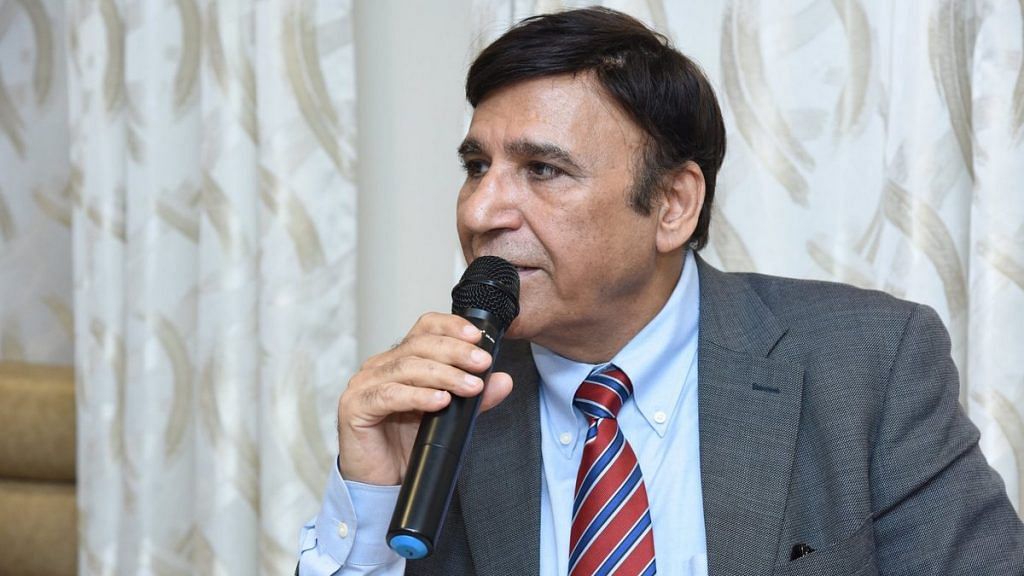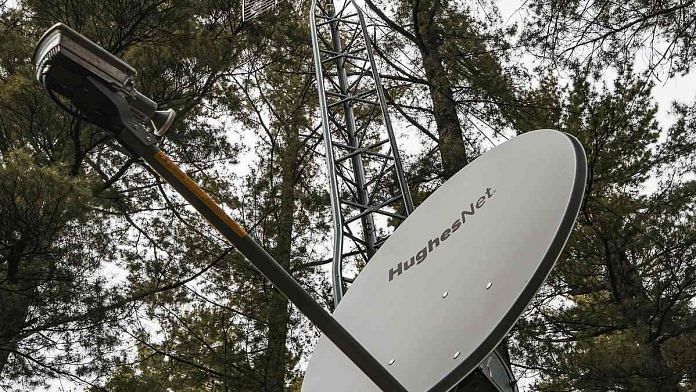New Delhi: Internet services via satellite will play a critical role in providing broadband to rural India. But auctioning the satellite spectrum — which is something that is an option for the government — could make rural connectivity that much harder to achieve, says Bharat Bhatia, president of the non-profit telecom industry body ITU-APT Foundation of India (IAFI).
The IAFI is partnered with two international bodies — the International Telecommunication Union (ITU), which is the United Nations’ specialised agency for information and communication technologies (ICT), and the Asia Pacific Telecommunity (APT), an intergovernmental organisation set up to promote ICT in the Asia-Pacific region.
In a 13 September interview with ThePrint, Bhatia spoke about the importance of satellite spectrum in meeting India’s connectivity goals. He also discussed the challenge before the government at a time when satellite players are arguing that telco players shouldn’t get everything when it comes to spectrum.
For Bhatia, allocating spectrum administratively rather than via an auction seems to be the better option.
“It doesn’t make sense for spectrum for satellite use to be auctioned because if one operator buys it, no one else can access it and the satellite industry will not grow in India, hindering the goal of rural broadband connectivity,” he said.
The race for spectrum is heating up in India since it’s a limited, scarce resource, but more and more companies are trying to enter telecom and satellite communication services.

Now in India, Amazon’s Project Kuiper is looking to provide internet via satellite, as are Bharti Enterprises (parent company of Airtel) via OneWeb and Jio Satellite.
Last week, Hughes Communications India and the Indian Space Research Organisation (ISRO) announced their joint commercial launch of the country’s first high-throughput (HTS) broadband service. But before that, Elon Musk’s Starlink exited India after delays in getting approvals
What’s important right now, Bhatia said, is that the government must “expedite the process” to issue spectrum to satellite service providers, since doing so is the best way to provide connectivity to rural India.
Also read: Excited for 5G? You may have to wait a bit longer for the ‘real’ thing, says telcos body chief
Satellite internet ‘critical’ for rural areas
Internet provided via satellite has a “critical role” to play in meeting the target of the 2018 National Digital Communications Policy (NDCP) to provide universal broadband connectivity in India by 2022, according to Bhatia.
“Only 60 per cent of this goal has been achieved. It is not possible to fully achieve this 2018 telecom policy goal only by laying fibre or setting up more telecom towers because the cost for the same is about 10 times higher compared to providing that last mile connectivity via satellite. Satellite services are therefore critical for providing internet to rural and hilly areas,” Bhatia said.
The 2018 NDCP also listed the goal of giving all gram panchayats 10 Gbps speed internet by 2022.
For context, 10 Gbps is the fastest internet speed available in the world, and India is yet to set up broadband infrastructure for all 2,50,000 panchayats.
Auction vs administrative fee for spectrum
When the government conducted its 5G spectrum auction in July, it kept out the coveted 27.5 GHz to 28.5 GHz band. This is a high-frequency portion of the spectrum that allows for the very fast speeds characteristic of 5G networks.
The reason was that is the “only portion of the spectrum that can be used by a few satellite operators”, Bhatia said.
“TRAI [Telecom Regulatory Authority of India] had to withdraw this one band of spectrum (27.5 Ghz to 28.5 GHz), from the auction for 5G spectrum after satellite service providers objected to it also being put up for auction because it’s the only band their satellites can operate on,” Bhatia explained.
“If a telecom operator also buys this spectrum, then private satellite service providers have no spectrum to operate on to provide services ranging from high-speed internet to backhaul for 5G,” he added.
Earlier this year, the Indian Space Association (ISpA) had written to TRAI, saying, “A number of startups are already working in developing satellites in the 28GHz spectrum. Allocating the satellite 28 GHz spectrum to 5G would cause irreversible damage to this sector in terms of loss of business for industry as well as the loss of a mammoth manufacturing opportunity on account of reduced demand from India.”
ISpA’s founding members include companies like Larson & Toubro, Nelco (Tata Group), Bharti Airtel, OneWeb, and Mapmyindia.
Discussing IAFI’s stance on the subject, Bhatia suggested that there were benefits to using the process of charging an administrative fee for spectrum rather than calling for bids.
“IAFI’s position is, let’s not reinvent the wheel while setting pricing for spectrum that satellites can use. Typically, TRAI recommends spectrum pricing in two ways — one is by auctioning the spectrum and the highest bidder gets the spectrum, and the second is by charging an administrative fee for using the spectrum. Any operator can pay the fee and use this common spectrum,” Bhatia said.
If TRAI goes the administrative fee way, each of these satellite service providers can offer internet to rural Indian users by paying the fee to use the spectrum. In most countries with advanced satellite service industries like the USA, the UK, and Australia, satellite service providers are charged an administrative fee for using the spectrum, Bhatia added.
‘Government in a difficult position’
Bhatia acknowledged that the government was in a tricky situation due to pulls and pressures from both satellite and telecom players.
“The government is in a difficult position since telecom operators feel satellite service providers will get the spectrum at a cheaper price than they did, while satellite service providers say they are left with no spectrum to operate on since telecom operators are trying to claim all the spectrum,” Bhatia said.
But, according to him, there could be a way to “placate” both sectors.
“A concern from telecom operators is that satellite providers can get access to the spectrum by paying the administrative fee, which is lower than an auction price. This does not necessarily have to be the case. IAFI feels while auctioning is not the right option, TRAI should devise a fair pricing method that will placate all stakeholders”, Bhatia said.
Hopes are high that there will be more clarity soon.
At a 12 September IAFI workshop for satellite regulations, telecom secretary K. Rajaraman said that a decision about high-frequency spectrum required by both telecom and satellite players would likely be taken in four to five months.
Bhatia is hopeful a decision will come so “India can get started on rural broadband connectivity.”
(Edited by Asavari Singh)
Also read: Your smartphone can guess your age, gender, apps used in 60 seconds, finds study on user privacy



